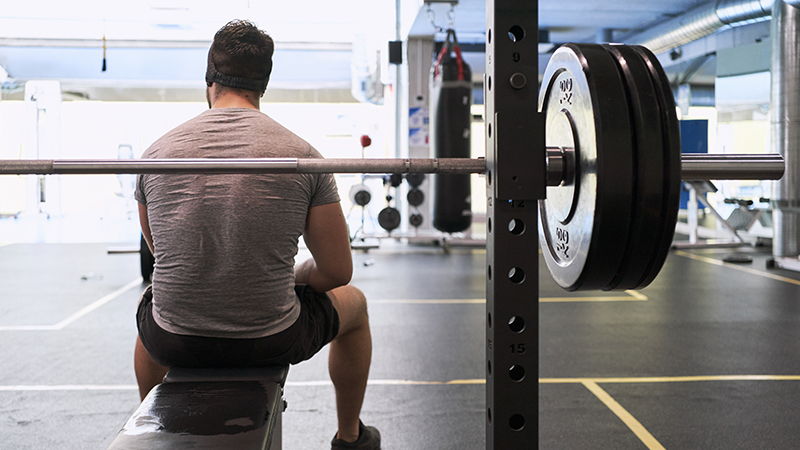I Had a Stroke. Can Aquatic Therapy Help?
Water Is an Excellent Medium for Rehabilitation Therapy
Published April 2023
Every 40 seconds, someone in the United States has a stroke. It’s a leading cause of adult disability. While no one is prepared for this sudden and often debilitating event, there are many roads to recovery.
Rehabilitation Therapy Is Key
After a stroke, rehabilitation therapy is important to help you regain as much function and quality of life as possible. Research shows a highly successful approach is aquatic therapy. Water has long been considered an excellent medium for stroke rehabilitation therapy with many benefits, including:
- Buoyant support for balance and movement
- Pain and inflammation reduction
- Relaxation and stress reduction
- Low-impact strength building
- Spasticity reduction
- Breath and respiration strength to support skills like speaking and eating
In addition to stroke recovery, aquatic therapy can also help with:
- Arthritis
- Chronic pain
- Post-surgical recovery
- Multiple sclerosis
- Spinal cord injury
- Bursitis
- Joint pain
- Fibromyalgia
- Low back pain
- Scoliosis
- Sprains and strains
- Tendinitis
“For some of our patients, the only way they can walk is in the pool,” says Caryn DuBois, a physical therapy assistant at Northwestern Medicine Outpatient Rehabilitation Orland Park. The Orland Park location is one of several Northwestern Medicine facilities that offers both land and aquatic therapy. “We do many of the same exercises on land that we do in the pool, but buoyancy makes it so much easier in the pool.” DuBois gives the example of having patients practice walking up and down steps, and adds, “It’s much easier to do steps in the water. And, the deeper the water, the less patients feel the effects of their weight as they exercise.”
DuBois says that, depending on a patient’s condition, they may start therapy in the water and transition to land therapy when they are strong enough and able to tolerate their own body weight.
What Patients Say
Mike’s Story
Mike Dreier, 64, a retired IT professional from Tinley Park, Illinois, experienced a significant stroke that affected his whole left side, leaving him unable to walk. He says that aquatic therapy was a major turning point in his recovery.
“I am now able to stand, walk and go up and down steps with minimal assistance,” he says. “My progress has steadily improved on land ever since. I believe the secret sauce for my recovery was aquatic therapy.”
DuBois who is one of Mike’s physical therapists, says he entered the therapy pool from a wheelchair and one month later he was able to walk 20 feet with a walker on land. Five months after that, he could walk 210 feet on land with the assistance of a walker. Mike also achieved one of his goals, which was to go on vacation with his family to Disney World. His next big goal? Playing the drums again.
“I am forever grateful to my physical therapists and my wife, who is a nurse, for challenging and encouraging me every step of the way,” says Mike.
Lauren’s Story
Two years ago, when she was nine months pregnant and living outside of Illinois, Lauren Bern-Britton, now 40, experienced a brain aneurysm and had an emergency cesarean section. Five days after delivering her baby, Lauren experienced a brain stem stroke that led to locked-in syndrome, a rare disorder of the nervous system. She was completely paralyzed and remained in that condition for two months, receiving inpatient and outpatient rehabilitation to help get her mobility back.
“The outpatient physical therapist I was working with suggested I try aquatic therapy,” says Lauren who now lives in Flossmoor, Illinois, with her husband and child. "I got a referral from my primary care doctor and started aquatic therapy closer to my home.”
That’s when Lauren met the team of physical therapists at Orland Park Outpatient Rehabilitation.
“When I started aquatic therapy, I had pretty good movement in my left side but the right side of my body was still paralyzed,” says Lauren. “By going to aquatic therapy I noticed a significant improvement in my strength, balance and endurance. Practicing walking in the water really helped my walking — with assistance — on land.”
When she started aquatic therapy, Lauren says she could not put any weight on her right leg without her knee buckling. She says that subsided and eventually stopped completely after eight months of aquatic therapy.
One of Lauren’s personal goals was to walk down the aisle at her sister’s wedding this past October. She was the maid of honor.
“I did achieve my goal, and my husband escorted me down the aisle,” says Lauren. “I still have a long way to go in in my recovery, but aquatic therapy has definitely been beneficial.”





